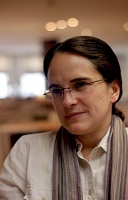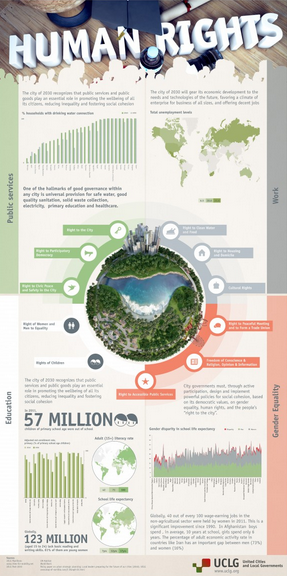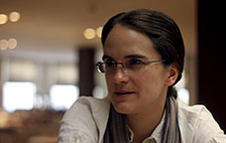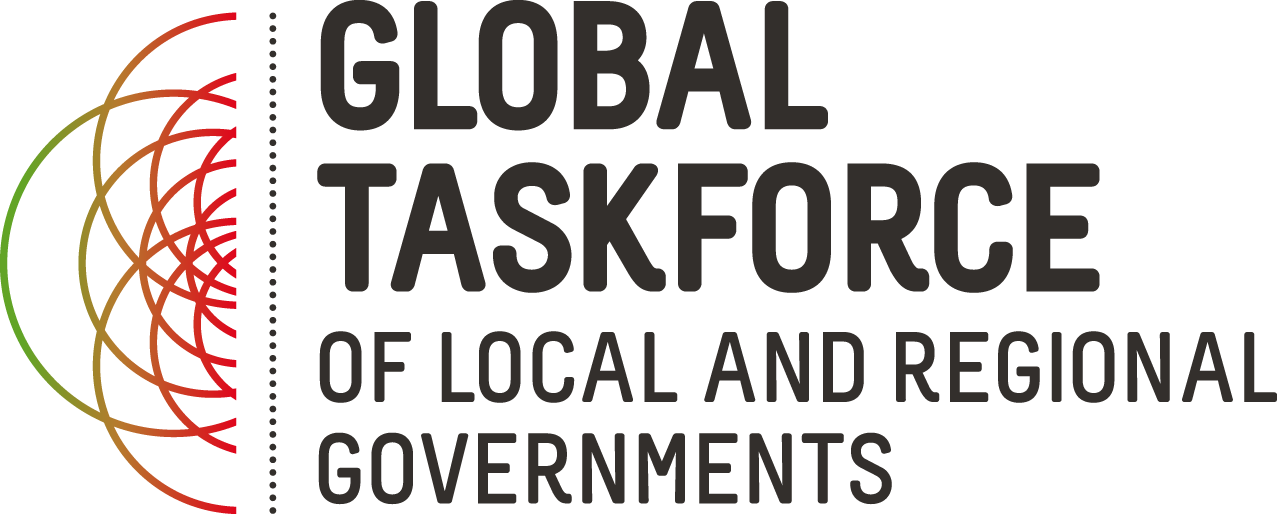
Source: http://www.un-ngls.org/
By Lorena Zárate, President Habitat International Coalition (HIC), Mexico City
Lorena Zárate, President of Habitat International Coalition (HIC) outlines the multiple challenges facing the rapid growth of urban populations and how a multistakeholder framework entitled the "right to the city" could provide a comprehensive approach to support the sustainable cities and human settlements agenda that may emerge from the current post-2015 negotiations, as well as contribute to the Habitat III Summit in 2016.
[The Right to the City is] the right to change ourselves, by changing the city David Harvey, 2008
The text is partly based on an article originally written for the publication El derecho a la ciudad, Institut de Drets Humans de Catalunya and Observatori DESC, Barcelona, 2011, pp. 53-70 (in Spanish and Catalonian). Electronic version available at The urban phenomenon: The cities we have
It is increasingly difficult to find analyses about the underlying causes of urbanization. The tendency to population concentration is not only not questioned; it is perceived as irreversible (our “urban future”). There are oscillating, extreme views that do not suffice to thoroughly explain our surrounding reality: from the aphorisms that strongly defend life in the cities and the role it plays in relation to rural areas (“development engines”, “hope magnets”), to the apocalyptic denouncement that we are on our way to having a “planet of slums.” In both cases, there is little said about the distinct responsibility of various social actors, about the relation between the rural and the urban worlds, or about the nuances and possibilities to transform the process.
The concentration of economic and political power is a phenomenon of exploitation, dispossession, exclusion and discrimination whose spatial dimensions are clearly visible: dual cities of luxury and misery; empty buildings and people without a decent place to live; land without campesinos (peasants) who are subjected to abuses by agro-businesses; and private appropriation and accumulation of commons goods, resources and wealth that were collectively created. It is estimated that, from all the private land in the world, three quarters are in the hands of only 2.5% of the world population.2 The conditions and rules currently present in our societies are globally condemning more than one third of the world population to live in absolute poverty. The inequalities are increasing both in the so called developed and developing countries. Impoverished neighbourhoods [so called “urban slums”]3 are home of at least one third of the population in the global South (in some Latin American and African countries it could reach 60% or more).
It is not new to anyone that, especially in the last 25 years, many governments have abandoned their responsibility for any urban-territorial planning, leaving “the market” to freely operate the private appropriation of urban spaces, almost without any restriction to real-estate speculation and exponential revenues. Thousands of families have been put under the unbearable threat of eviction without any alternative – with particularly devastating effects on women and children.4
At the same time, many current regulations ignore, or even criminalize, people’s individual and collective efforts to obtain a decent place to live. In the South, between 50 and 75% of the available living space is the result of people’s own initiatives and efforts, without any – or with very little – support from governments and other actors. In many cases, these initiatives go against many “official” barriers.5 Instead of supporting those popular processes (what we define as “social production of habitat”), our States have created conditions to guarantee that a few private housing developers make profits.6
The cities we want: Struggles for the Right to the City and the urban reform in Latin America and the world
 For a long time now, we have been talking about the urgent need of an urban reform that is in solidarity with agrarian reform. The main elements of a democratic, inclusive, sustainable, productive, educational and liveable city have been part of the debates, proposals and concrete experiences of social movements, national and international civil society networks, trade unions, academic institutions and human rights activists in different Latin American countries for the last 50 years. The urban reform and the Right to the City are now present both in theoretical and legal frameworks and as a platform for action, social mobilisation and articulation of alternatives in other regions as well.7
For a long time now, we have been talking about the urgent need of an urban reform that is in solidarity with agrarian reform. The main elements of a democratic, inclusive, sustainable, productive, educational and liveable city have been part of the debates, proposals and concrete experiences of social movements, national and international civil society networks, trade unions, academic institutions and human rights activists in different Latin American countries for the last 50 years. The urban reform and the Right to the City are now present both in theoretical and legal frameworks and as a platform for action, social mobilisation and articulation of alternatives in other regions as well.7
The Earth Summit (Rio de Janeiro 1992), Habitat II (Istanbul, 1996) and the First World Assembly of Inhabitants, Rethinking the City from the People (Mexico City, 2000) were important moments for the articulation of actors and the development of concrete proposals. Undoubtedly, this process has gained new strength and expanded in size and content since 2001 in the World Social Forum (WSF). Thousands of people, and dozens of organizations and networks – UNESCO and UN Habitat included – have since participated in discussions, preparations, signing and dissemination of the World Charter for the Right to the City 8 – defined as the equitable usufruct of cities within the principles of sustainability, democracy, equity and social justice.
Parallel to these civil society initiatives, some governments at regional, national and local levels have created instruments to protect and realize human rights in the urban context. Some of the most progressive ones now in force include the European Charter to Safeguard Human Rights in the City (2000), the City Statute of Brazil (2001), the Montreal Charter of Rights and Responsibilities (2006), the Constitution of Ecuador (2008), the Global Charter-Agenda for Human Rights in the City (2010) promoted by the network United Cities and Local Governments (UCLG), the Gwangju Human Rights Charter (2012) and the Vienna Charter (2012).
At an international level, the Right to the City was taken up as official motto by the Fifth World Urban Forum, organized by the UN Habitat in Rio de Janeiro in 2010, and offered a series of massive and multi-actor activities of promotion, reflection, debate and training. Simultaneously, in unprecedented joint efforts and thanks to the role played by the National Forum for Urban Reform (Brazil) at the local level, we decided to summon the first Social Urban Forum. From both events came declarations which include a great deal of postulates and proposals. These achievements may certainly be considered important; at the same time, this is the moment to stay active and alert to protect the collectively defined contents and moved forward towards an effective implementation. The current work of the UN Human Rights Council Advisory Committee on local governments and human rights shows the growing relevance of this topic in the global agenda and opens an important opportunity to increase the knowledge, expertise and advocacy among different actors.
Please click here to read the full article











